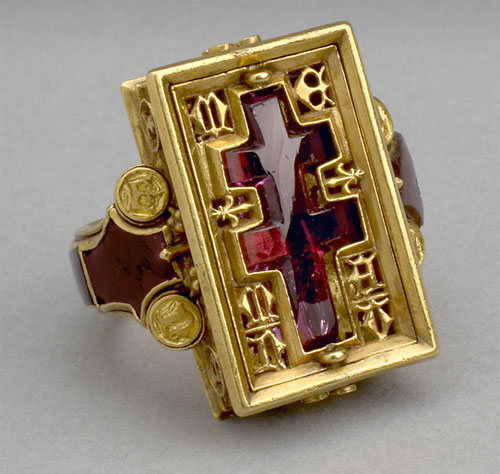There are always rumours of buried treasure but one summer’s day in 1940 rumour became fact for a gentleman out walking his dog.
Mr Willocks Mackenzie and his wife were walking along the river bank towards Lemmetts Hole. The banks were piled high with debris caused by dredging of the river bed.
Something shiny caught Mr Mackenzie’s eye as he bent to pick up a stone to throw for his dog. What he found among the gravel on that historic day were five gold rings and some silver coins which turned out to be grouts.
Some thought the treasure had come from the Prebendal. Others linked it with the legend of the theft of treasure from Thame Abbey.
The thief was being chased by a horseman who caught up with him at the river. The thief dropped his booty and drowned in the struggle with his would-be captor. The Coroner declared the hoard treasure trove and put forward his guess that the treasure had come from Thame Abbey and was hidden in the river by an over-zealous monk to stop it falling in to the hands of the King’s officers at the dissolution of the monasteries in 1540.
The treasure, which came to be known as the Thame hoard, is now on display in the Medieval section of the Ashmolean museum, Oxford. Two of the rings were said to be ‘magical’, and one ring was designed to act as a reliquary of some kind, possibly to hold a fragment of the true cross. It has been declared to be ‘priceless’, and dates from the late 14th or early 15th century when such reliquaries were commonplace, as were pieces of the true cross!
One of the magical rings had a toadstone in it – so called because it was supposed to come from the mouth of a toad (in fact it is a fossilised tooth). The toadstone was supposed to make men more worthy. The other magical ring was supposed to change colour if it ever came near poison.

Leave a Reply